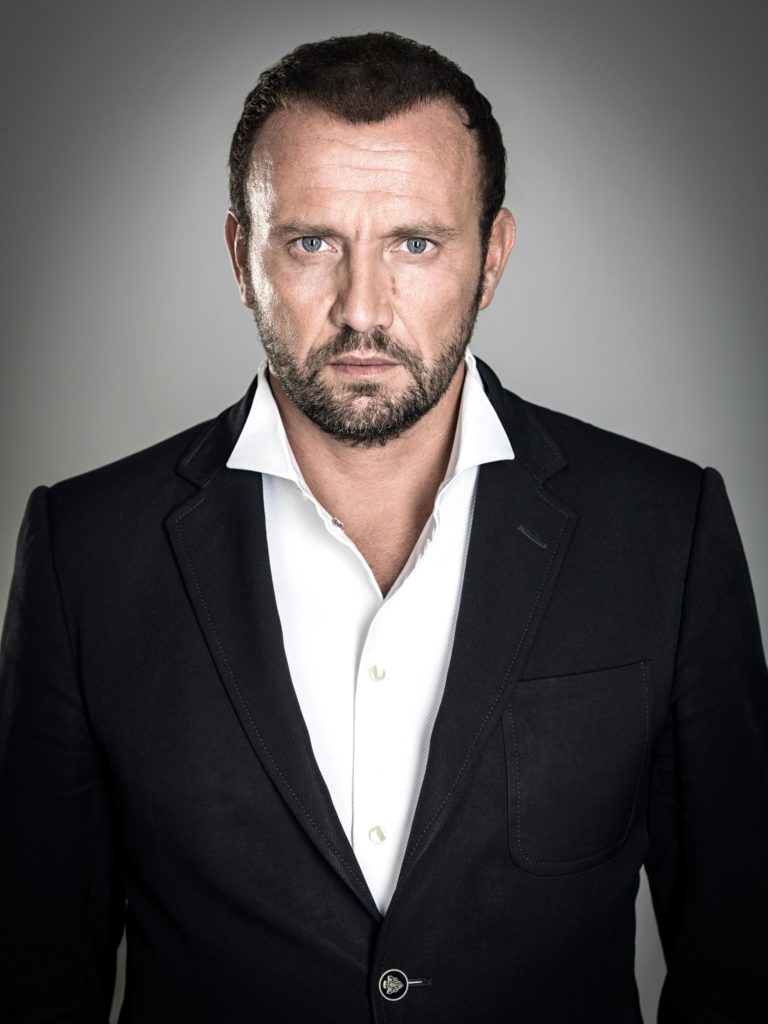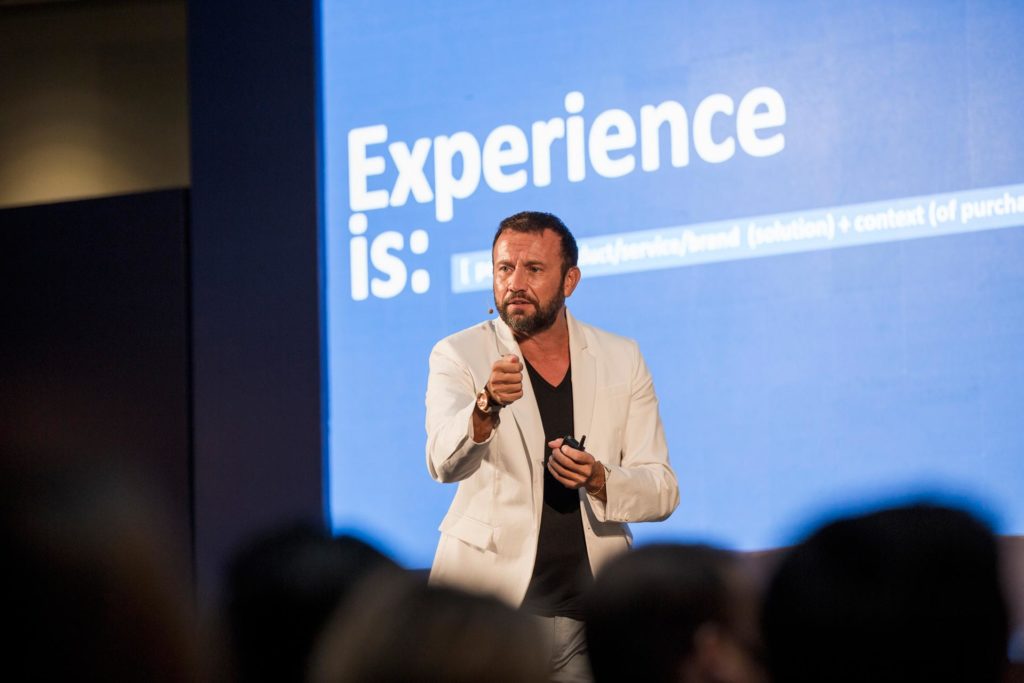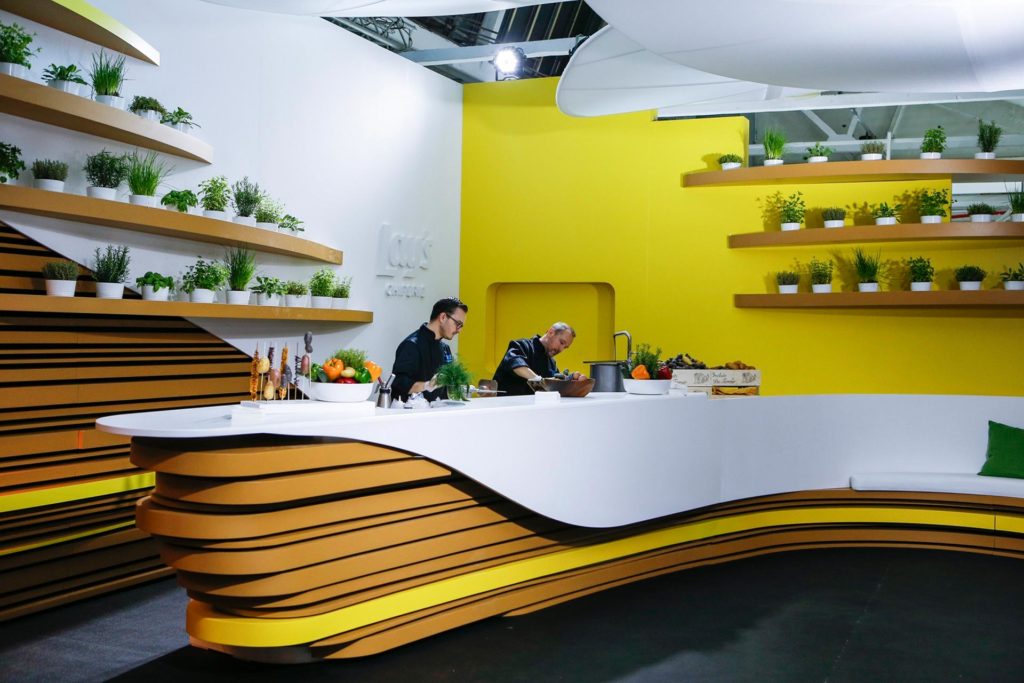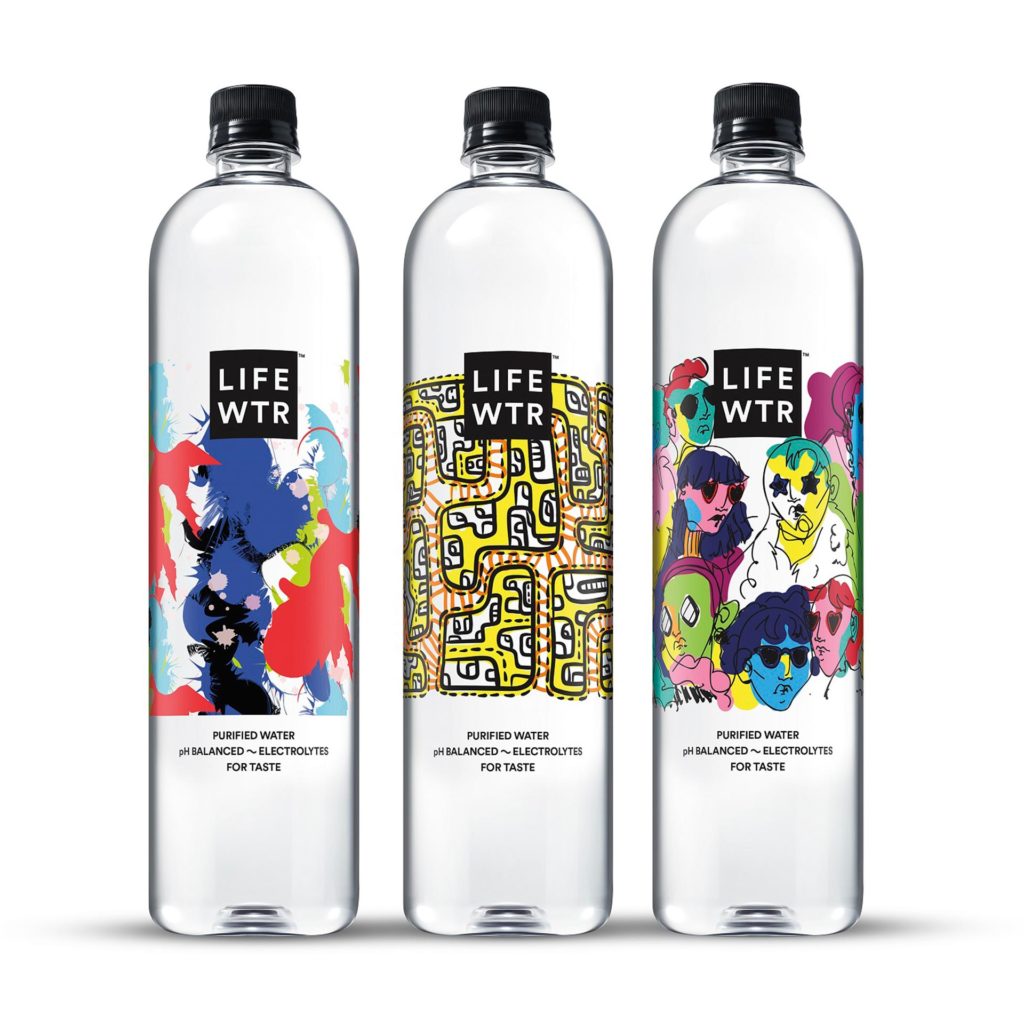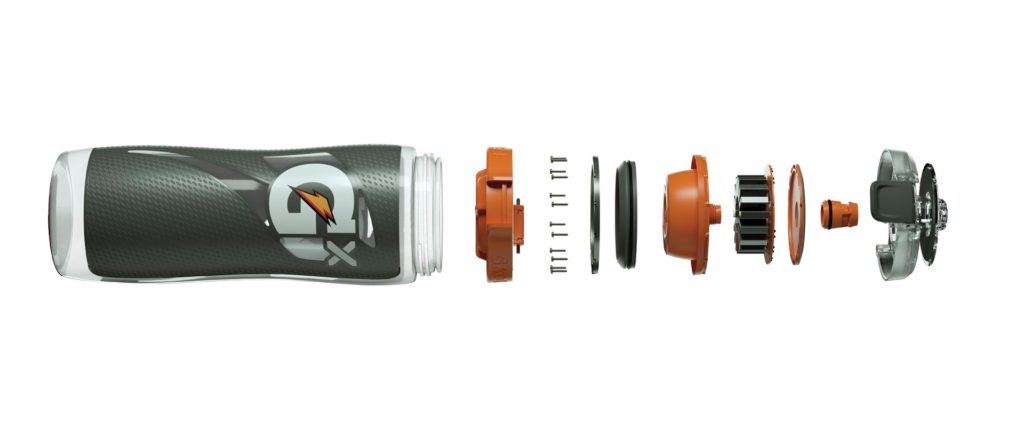Copyright © 2025 Motivate Media Group. All rights reserved.
Mauro Porcini is changing the game
The Chief Design Officer at PepsiCo reveals the new power of branding + design

The space was electric. Dubai’s top design talent and emerging young designers alike had filled seats around d3’s main stage during Dubai Design Week to hear the words of wisdom in the special keynote talk from PepsiCo’s Chief Design Officer, Mauro Porcini – one of the most innovative and creative people in the executive world.
Thunderous applause followed his dynamic presentation about the power of design thinking. A visionary leader, the dynamo joined PepsiCo five years ago after leaving top positions at 3M and Philips Design, and completely overhauled and redesigned the visual identity system (VIS) of Pepsi – a task that carried huge responsibility and risk.
Porcini’s ongoing innovation and commitment have earned him endless accolades, including the Italy-America Chamber of Commerce Business & Culture Award and the US Design Brand Leader Award. Fast Company recognised him as one of the ‘50 Most Influential Designers in America’ and ‘Master of Design’, while the World HR Forum in Mumbai presented him with its ‘Award for Leadership and Innovation’. His PepsiCo Design function won the ‘Red Dot Client of the Year’ award in 2014 – the first CPG (consumer packaged goods) company and first American company to ever achieve the honour.
Porcini explained how he grew the global brand by having his design team work side-by-side within businesses to delight audiences and consumers by creating incredible experiences, and sharing amazing, engaging stories.
“Design is an international language by default,” said Porcini. “It speaks no distinct language and expresses human dialogue in a multitude of ways. If anything, travelling the world with PepsiCo has helped me affirm this even more through witnessing the similarities of humans everywhere first-hand and experiencing the beautiful impact of design as a means of uniting people from different walks of life.”
His experience during Dubai Design Week (DDW) confirmed this belief. “I had a fantastic time. I had the chance to meet with talented design professionals, and saw the incredible designs created by students from the region. There is tremendous talent in this region.”
But as a powerful conduit between business and creative work, he is keen to highlight DDW’s important business potential. “Before anything else, Dubai is a business hub for the Middle East and the world. Design, first of all, can be an incredible asset for the business world, to drive even more growth and innovation. DDW can be the wonderful occasion to connect the creative and business communities and create two-way communication where the design community can tell the business community, ‘we can help you’,” he states.
He was also inspired by the city itself. “One of my favourite architectural structures in the UAE is the Burj Khalifa. When you are in the city, you see this beautiful architecture that is so natural and, in a very organic way, articulates itself towards the sky. It connects the ground and the city, and the dynamic movement of people and the metaphorical movement of business and creativity that happens on the ground in the city. It is a beautiful expression of the tension of a city towards innovation, the new and the limit of what is possible and feasible. It is a beautiful metaphor for what the city stands for and it is just visually and aesthetically fantastic. It is one of my favourite buildings in the world.”
Evolution of a design thinker
A truly expansive design thinker, Porcini has his own design philosophy that is intimately connected with praxis from the start.
“For me, the design process starts before the process. The design process is a 24/7 mind-set that starts with the observation of reality with extreme curiosity. The reality is that we need ethnographers, observers and anthropologists 24/7. We observe, absorb and learn. Then we go back to our company and translate those insights into solutions that are relevant to our organisations, brands and company, but mostly to the people we ultimately design for,” he explains.
Porcini also sees an important connection is between brand and experiences. “By definition, an experience is a story. To us, design represents the personal interaction between you and the brand or the product you buy, and the story that the product or brand is telling about you to the world.”
He quickly translates this general thought into specific outcomes. “This process essentially leverages three aspects of interaction between people and products or brands: The first is the functional one, the second aspect is the emotional benefit, and the third aspect is what we call the symbiotic or symbolic connection.”
These outcomes yield concrete, dynamic results. “An example of how these three aspects work is when someone walks down the street with a bottle of LIFEWTR. As a brand, its functional benefit is that it contains electrolytes and is therefore all about hydration. The emotional benefit of the brand, and an aspect we know the youth fell in love with, is the look of the bottles that have become a canvas for emerging artists. As a result, the bottles have become a really cool, engaging, colourful and ever-changing medium for discovering a new artist every time. And finally, the symbiotic or symbolic value is the pride consumers feel carrying that bottle and placing it on a table for their family and friends to see. It makes them feel like they belong to a creative community.”
Like every truly great thinker, Porcini honours those who have guided his thinking. “Historically, it would have to be Leonardo da Vinci! He was in love with the planet and was on a perpetual quest for what I call ‘holistic innovation’,” he says. “Another is Plato. He realised that love is what drives the universe. The design I dream and I practice is the one that Plato, thousands of years ago, called ‘love’,” he muses.
His mentors have also been critical for the understanding of his mind-set and how he works. “The first is Italian designer Stefano Marzano. He was Chief Design Officer and CEO at Philips from 1991 to 2011. He had a passion for innovation and design, and the way he intertwined both with a long-term view was incredible,” he explains.
“The second is Claudio Cecchetto, one of the most famous Italian music producers, whom I met during my time at Philips. I was in my twenties then and working with someone of his stature was a dream come true. Claudio’s vision was that every single project he worked on ought to have infinite value – and this is a philosophy that has stayed with me. Whether it is tweaking packaging or completely changing a brand, it has to be something that nobody has done before, or that adds tangible value to the consumer.”
This dedication to innovation has directly influenced Porcini’s creative direction for PepsiCo. Launched in 2014, the Spire family of equipment was the first product of Pepsi’s design-thinking approach. The series of vending machines and fountains let the consumer customise their beverage, choosing their drink and adding flavours accordingly. “Spire is one of my favourite innovations because it was so unique for the industry. Customers really loved the idea and it helped us showcase what design can really achieve,” Porcini remarks.
With his signature verve, he is positive about the future, despite all its challenges. “PepsiCo focuses on delivering sustainable long-term growth with a positive imprint on society and the environment – what we call ‘Performance with Purpose’ (PwP). As part of PwP, I look forward to creating packaging and designs that are not only engaging and extraordinary, but also sustainable – to provide value for people with extreme respect for the world we live in.”
The Latest
How Eywa’s design execution is both challenging and exceptional
Mihir Sanganee, Chief Strategy Officer and Co-Founder at Designsmith shares the journey behind shaping the interior fitout of this regenerative design project
Design Take: MEI by 4SPACE
Where heritage meets modern design.
The Choreographer of Letters
Taking place at the Bassam Freiha Art Foundation until 25 January 2026, this landmark exhibition features Nja Mahdaoui, one of the most influential figures in Arab modern art
A Home Away from Home
This home, designed by Blush International at the Atlantis The Royal Residences, perfectly balances practicality and beauty
Design Take: China Tang Dubai
Heritage aesthetics redefined through scale, texture, and vision.
Dubai Design Week: A Retrospective
The identity team were actively involved in Dubai Design Week and Downtown Design, capturing collaborations and taking part in key dialogues with the industry. Here’s an overview.
Highlights of Cairo Design Week 2025
Art, architecture, and culture shaped up this year's Cairo Design Week.
A Modern Haven
Sophie Paterson Interiors brings a refined, contemporary sensibility to a family home in Oman, blending soft luxury with subtle nods to local heritage
Past Reveals Future
Maison&Objet Paris returns from 15 to 19 January 2026 under the banner of excellence and savoir-faire
Sensory Design
Designed by Wangan Studio, this avant-garde space, dedicated to care, feels like a contemporary art gallery
Winner’s Panel with IF Hub
identity gathered for a conversation on 'The Art of Design - Curation and Storytelling'.
Building Spaces That Endure
identity hosted a panel in collaboration with GROHE.

